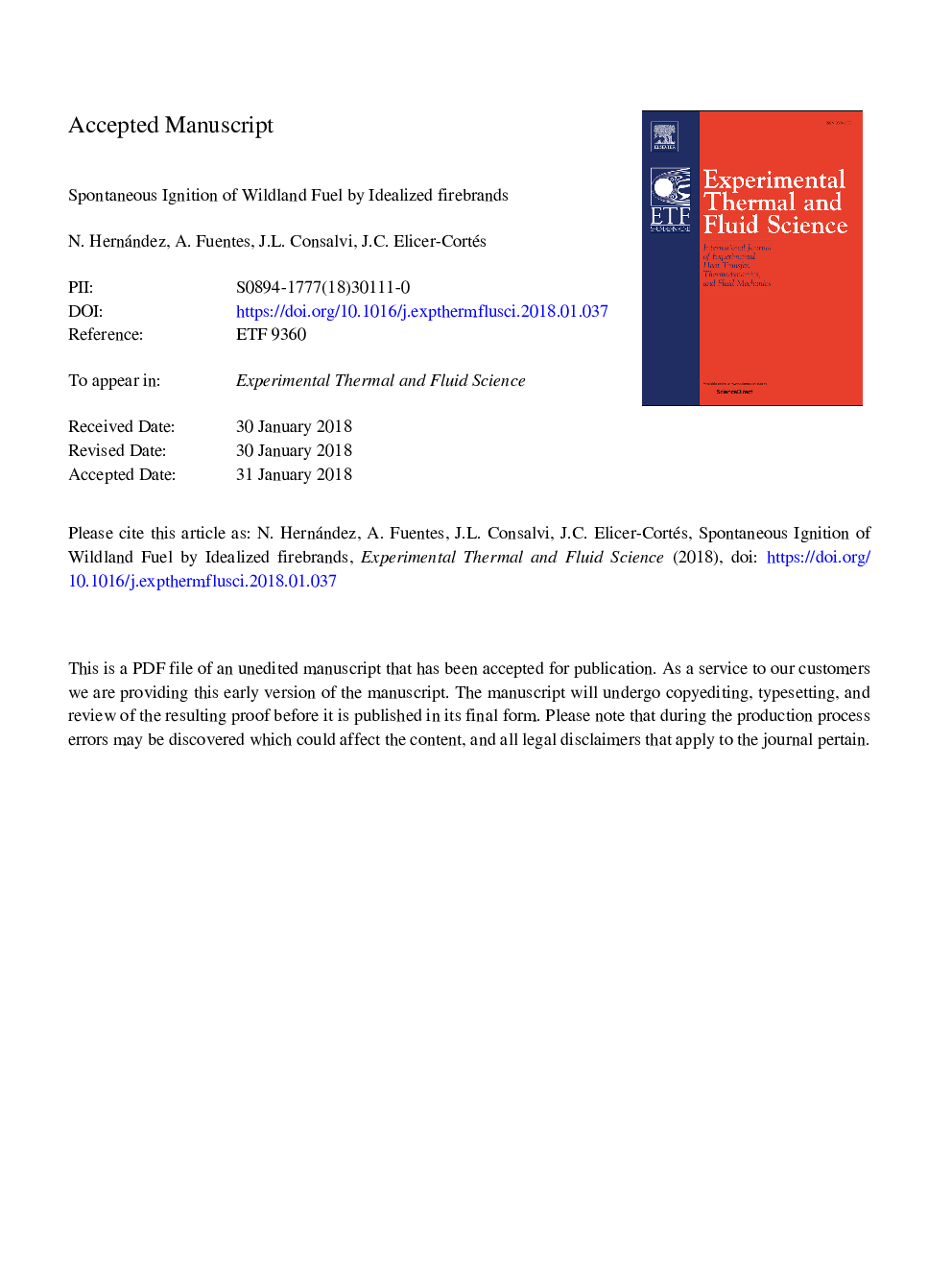| Article ID | Journal | Published Year | Pages | File Type |
|---|---|---|---|---|
| 7051706 | Experimental Thermal and Fluid Science | 2018 | 15 Pages |
Abstract
The spontaneous ignition of a forest fuel layer by idealized firebrands was carried out experimentally in a bench scale apparatus designed to understand the relationship between the time to ignition and incident radiative heat flux on a ring-shaped forest fuel litter. Time to ignition, mass loss, radial temperatures and incident radiative heat flux were measured. The fuel samples were Radiata Pine needles, representative of Chilean forests and the influence of the physical characteristics of the fuel load were analyzed. The firebrand was idealized using a cylindrical electric heater capable of releasing heat flux up to 26.7â¯kW/m2. For the fuel beds considered the inverse of ignition time was found to be linearly dependent on the incident radiative heat flux, typically observed for thermally thin solid fuels. Several tests were carried out in order to estimate the critical (minimum) heat flux for spontaneous ignition for two forest fuel loads. Additionally, a quasi-linear relationship between mass loss rate and incident radiative heat flux was experimentally determined.
Related Topics
Physical Sciences and Engineering
Chemical Engineering
Fluid Flow and Transfer Processes
Authors
N. Hernández, A. Fuentes, J.L. Consalvi, J.C. Elicer-Cortés,
